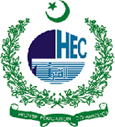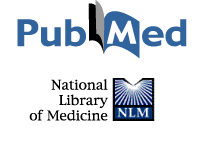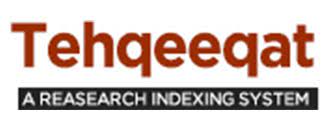EXAMINING THE BURNOUT EPIDEMIC: PREVALENCE AND CONTRIBUTING FACTORS AMONG HEALTH-CARE PROFESSIONALS IN BALOCHISTAN: A CROSS-SECTIONAL STUDY
DOI:
https://doi.org/10.55519/JAMC-01-14261Keywords:
Burnout; Healthcare; BalochistanAbstract
Background: Burnout is a commonly recognized phenomenon that is defined by a prolonged state of exhaustion, both physically and psychologically. This is a condition that almost all medical professionals deal with, mainly because medical profession is so extremely hard and overloaded. This study explores the factors that contribute to burnout and how common it is among health-care worker in Balochistan. Methods: This cross-sectional study was carried out at different hospitals in Balochistan between January and June of 2023; we carefully looked at the levels of burnout among health-care professionals. Convenience sampling was used to choose the participants, guaranteeing a varied representation. We employed thees American Public Welfare Association. Questionnaire as our all-inclusive burnout assessment instrument. There was statistical analysis done with SPSS 23. Result: We found that participants in our study (n=307) had various degrees of professional well-being. Significantly, 30% (n=92) said they had "no stress or professional burnout," whereas 37% (n=112) said they had "stress but no professional burnout," suggesting that stress was common but controllable. Among those with a 'Fairly likelihood of burnout,' a notable 16% (n=48) required attention to avoid escalation. Furthermore, 10.77% (n=32) of the participants were in the 'Early burnout' stage, highlighting the importance of prompt intervention. Last but not least, 4.3% (n=13) showed indications of "Advance burnout," highlighting the significance of focused assistance for this category. Conclusion: The wide range of experiences seen, from little stress to early and severe burnout, highlights the necessity of specialized therapies and support networks to deal with the complex issues that health-care professionals in this area encounter.
References
1. Maslach C, Leiter MP. Understanding the burnout experi-ence: recent research and its implications for psychiatry. World Psychiatry. 2016;15(2):103–111.
2. Shanafelt TD, Dyrbye LN. Physician burnout: a potential threat to successful health care reform. JAMA. 2012;307(19):2131–2132.
3. West CP, Dyrbye LN, Shanafelt TD. Physician burnout: contributors, consequences, and solutions. J Intern Med. 2018;283(6):516–529.
4. Embriaco N, Azoulay E, Barrau K, Kentish N, Pochard F, Loundou A. High level of burnout in intensivists: preva-lence and associated factors. Am J Respir Crit Care Med. 2007;175(7):686–692.
5. Aiken LH, Clarke SP, Sloane DM, Sochalski J, Silber JH. Hospital nurse staffing and patient mortality, nurse burnout, and job dissatisfaction. JAMA. 2014;288(16):1987–1993.
6. Panagioti M, Panagopoulou E, Bower P, Lewith G, Kon-topantelis E, Chew-Graham C, et al. Controlled interven-tions to reduce burnout in physicians: a systematic review and meta-analysis. JAMA Intern Med. 2017;177(2):195–205.
7. Adriaenssens J, De Gucht V, Maes S. Determinants and prevalence of burnout in emergency nurses: A systematic review of 25 years of research. Int J Nurs Stud. 2015;52(2):649–661.
8. Fahrenkopf AM, Sectish TC, Barger LK, Sharek PJ, Lewin D, Chiang VW, et al. Rates of medication errors among de-pressed and burnt out residents: prospective cohort study. BMJ. 2008;336(7642):488–491.
9. Halbesleben JR, Rathert C. Linking physician burnout and patient outcomes: exploring the dyadic relationship be-tween physicians and patients. Health Care Manag Rev. 2008;33(1):29–39.
10. Ramirez AJ, Graham J, Richards MA, Cull A, Gregory WM. Mental health of hospital consultants: the effects of stress and satisfaction at work. Lancet. 1996;347(9003):724–728.
11. Dewa CS, Loong D, Bonato S, Trojanowski L, Rea M. The relationship between physician burnout and quality of healthcare in terms of safety and acceptability: a systematic review. BMJ Open. 2014;4(8):e003167.
12. Rothenberger DA. Physician burnout and well-being: A systematic review and framework for action. Dis Colon Rec-tum. 2017;60(6):567–576.
13. Mealer M, Conrad D, Evans J, Jooste K, Solyntjes J, Roth-baum B, et al. Feasibility and acceptability of a resilience training program for intensive care unit nurses. Am J Crit Care. 2017;26(1):10–18.
14. Williams ES, Konrad TR, Linzer M, McMurray J, Pathman DE, Gerrity M, et al. Physician, practice, and patient charac-teristics related to primary care physician physical and men-tal health: results from the Physician Worklife Study. Health Serv Res. 2008;43(2):536–556.
15. Rotenstein LS, Torre M, Ramos MA, Rosales RC, Guille C, Sen S, et al. Prevalence of burnout among physicians: a sys-tematic review. JAMA. 2018;320(11):1131–1150.
16. Salvagioni DAJ, Melanda FN, Mesas AE, González AD, Gabani FL, Andrade SM de. Physical, psychological and occupational consequences of job burnout: A systematic review of prospective studies. PLoS One. 2017;12(10):e0185781.
17. Toker S, Biron M, Spector PE. Relationships between job stressors and job performance: a conceptual and meta-analytic review. J Appl Psychol. 2012;97(3):619–32.
18. Dubale BW, Friedman LE, Chemali Z, Denninger JW, Mehta DH, Alem A, et al. Systematic review of burnout among healthcare providers in sub-Saharan Africa. BMC Public Health. 2019;19(1):1247.
19. Kumar S. Burnout and doctors: prevalence, preven-tion and intervention. Healthcare (Basel). 2016;4(3):37.
20. Chirico F, Magnavita N. The COVID-19 pandemic and the burnout syndrome: a cross-sectional study among healthcare workers in Italy. J Health Soc Sci. 2020;5(2):169–75.
21. Poghosyan L, Clarke SP, Finlayson M, Aiken LH. Nurse burnout and quality of care: cross-national investigation in six countries. Res Nurs Health. 2010;33(4):288–98.
22. Ishak W, Nikravesh R, Lederer S, Perry R, Ogunyemi D, Bernstein C. Burnout in medical stu-dents: a systematic review. Clin Teach. 2013;10(4):242–5.
23. Afzal A, Khan MA, Saeed H, Anjum S. Burnout and its associated factors among health profession-als in Pakistan: a cross-sectional survey. J Ayub Med Coll Abbottabad. 2020;32(2):179–83.
24. Bano S, Ullah H, Khan A, Javed I. Prevalence and factors associated with burnout among physicians in public sector hospitals of Quetta, Balochistan. Pak J Public Health. 2021;11(2):88–92.
25. Ahmed Z, Shaikh BT. Medical education and re-search in Pakistan: challenges and the way forward. J Coll Physicians Surg Pak. 2008;18(5):317–9.
Downloads
Published
How to Cite
Issue
Section
License
Copyright (c) 2025 Abdul Samad Gichki, Nawab Shah, Mir Mubarak Baloch, Bakhtiyar Ali

This work is licensed under a Creative Commons Attribution-NoDerivatives 4.0 International License.
Journal of Ayub Medical College, Abbottabad is an OPEN ACCESS JOURNAL which means that all content is FREELY available without charge to all users whether registered with the journal or not. The work published by J Ayub Med Coll Abbottabad is licensed and distributed under the creative commons License CC BY ND Attribution-NoDerivs. Material printed in this journal is OPEN to access, and are FREE for use in academic and research work with proper citation. J Ayub Med Coll Abbottabad accepts only original material for publication with the understanding that except for abstracts, no part of the data has been published or will be submitted for publication elsewhere before appearing in J Ayub Med Coll Abbottabad. The Editorial Board of J Ayub Med Coll Abbottabad makes every effort to ensure the accuracy and authenticity of material printed in J Ayub Med Coll Abbottabad. However, conclusions and statements expressed are views of the authors and do not reflect the opinion/policy of J Ayub Med Coll Abbottabad or the Editorial Board.
USERS are allowed to read, download, copy, distribute, print, search, or link to the full texts of the articles, or use them for any other lawful purpose, without asking prior permission from the publisher or the author. This is in accordance with the BOAI definition of open access.
AUTHORS retain the rights of free downloading/unlimited e-print of full text and sharing/disseminating the article without any restriction, by any means including twitter, scholarly collaboration networks such as ResearchGate, Academia.eu, and social media sites such as Twitter, LinkedIn, Google Scholar and any other professional or academic networking site.










